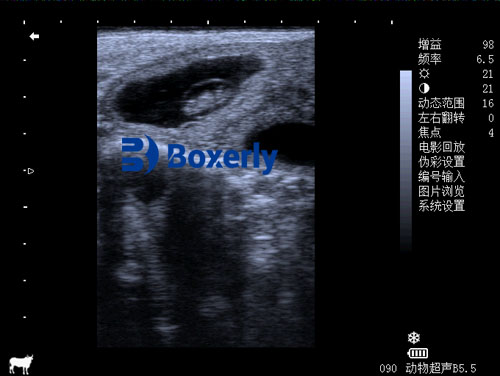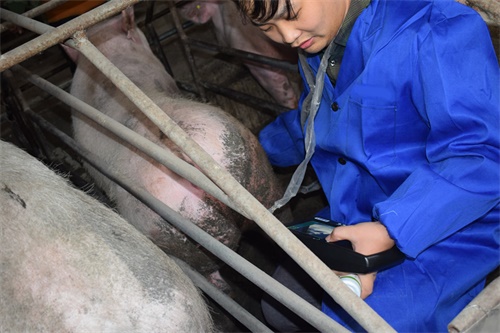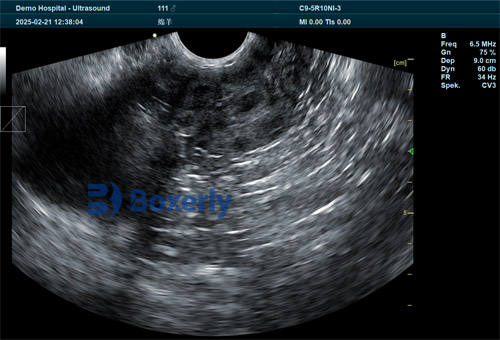As veterinary medicine continues to evolve, the integration of advanced imaging technologies into daily clinical practice has become not just advantageous—but essential. Among the many tools available, ultrasound stands out as one of the most transformative diagnostic methods in modern veterinary care. It’s fast, non-invasive, versatile, and applicable across nearly every animal species. Yet, while ultrasound is widely used by experienced practitioners, it remains underrepresented in many veterinary education programs around the world. In this article, we explore why ultrasound training must become a core component of the veterinary curriculum of the future, and how this shift is already underway in progressive institutions around the globe.

The Expanding Role of Ultrasound in Veterinary Practice
In the past two decades, ultrasound has evolved from a niche tool used primarily by specialists to a daily diagnostic aid in routine practice. Whether it’s checking pregnancy in dairy cows, diagnosing heart conditions in cats, or evaluating abdominal masses in dogs, ultrasound now plays a pivotal role in diagnostic decision-making.
Veterinary practices in the United States, Canada, Australia, and much of Europe have increasingly adopted portable ultrasound devices for use in both large and small animal settings. According to a 2023 report by the American Veterinary Medical Association (AVMA), over 60% of small animal clinics and 75% of large animal practitioners in North America regularly use ultrasound in clinical care.
Despite this, many new veterinary graduates enter the workforce with limited hands-on ultrasound training, often relying on on-the-job experience or post-graduate CE courses to build confidence with the tool.
Why Ultrasound Training Must Start in Vet School
-
Ultrasound is No Longer Optional
Veterinary students are being trained to diagnose and treat increasingly complex conditions, yet many schools still treat ultrasound as an elective or advanced elective course. In contrast, bloodwork analysis, X-ray interpretation, and physical exams are taught as fundamentals. This imbalance creates a gap in competence that can compromise clinical efficiency and decision-making in the real world.
-
Ultrasound Offers Real-Time Insight Without Radiation
Compared to radiography or CT scans, ultrasound offers the advantage of real-time imaging, no ionizing radiation, and high portability. This makes it an ideal tool for emergency, ambulatory, and reproductive settings. It also aligns with animal welfare principles by minimizing stress and avoiding unnecessary sedation.
-
Early Training Improves Clinical Confidence
Several international studies, including one from the Royal Veterinary College in the UK, have shown that veterinary students who receive ultrasound training early in their education demonstrate significantly higher diagnostic confidence during clinical rotations. Even basic skills—like locating a bladder, uterus, or heart—can vastly improve a student’s clinical utility in practice.
Global Trends in Veterinary Education: A Shift Toward Imaging
Forward-thinking veterinary schools are now recognizing ultrasound’s value and incorporating it into their core curriculum. For instance:
-
University of California, Davis: Offers structured ultrasound modules beginning in the second year of training, with exposure to both small and large animals.
-
University of Sydney: Includes practical ultrasound labs in reproductive and emergency medicine courses, allowing students to scan live animals under supervision.
-
Utrecht University, Netherlands: Has introduced problem-based learning modules that require students to perform ultrasound-guided diagnostics as part of case studies.
-
Veterinary schools in Germany and Scandinavia: Have begun using ultrasound simulators—virtual training platforms that allow students to practice scanning before interacting with live patients.
These examples reflect a growing consensus that ultrasound is not a “bonus skill,” but rather a core clinical competency.

Teaching Methods: How Should Ultrasound Be Taught?
-
Simulation-Based Learning
Just as pilots train in flight simulators, veterinary students can now train on ultrasound simulators, which mimic the resistance, depth, and feedback of real scanning. This allows students to build muscle memory and learn probe handling techniques in a controlled environment.
-
Live Animal Labs
Hands-on scanning of live patients (under guidance) allows students to connect ultrasound images with anatomical and physiological structures. Instructors can use station-based teaching, rotating students through bladder scanning, pregnancy detection, cardiac assessment, and abdominal organ visualization.
-
Portable Ultrasound Integration
Modern portable systems like the BXL-V50, widely used on farms and in mobile clinics, offer veterinary programs a cost-effective way to bring imaging to the field. These devices can be used during ambulatory animal health rounds, integrating real-world scanning with herd health management, reproduction checks, and emergency triage.
-
Cross-Disciplinary Use
Ultrasound is relevant across disciplines: in reproduction, it assists in follicle monitoring and pregnancy diagnosis; in internal medicine, it helps identify organ dysfunction; in surgery, it aids in pre-op planning and biopsy guidance. Veterinary schools should reinforce its utility by incorporating it into multiple subjects, not just radiology.
The Benefits of Early Ultrasound Proficiency
-
Improved Diagnostic Accuracy
Early detection of disease—whether it’s a uterine infection in a cow or ascites in a dog—can drastically improve treatment outcomes. Ultrasound gives real-time insights that can’t always be seen through palpation or auscultation.
-
Enhanced Animal Welfare
Non-invasive diagnosis reduces animal stress, pain, and the need for exploratory surgeries. Students trained to recognize this value are more likely to adopt compassionate, evidence-based practices.
-
Increased Career Competitiveness
Veterinary job markets in North America and Europe are highly competitive. New grads with ultrasound competence are often preferred by employers in mixed animal practices, emergency clinics, and food animal medicine.
-
Better Integration with Telemedicine
With the rise of remote consultations and mobile veterinary services, vets must often scan animals in non-clinical environments and share the images with specialists. Those trained in ultrasound during vet school can more easily integrate into these modern workflows.

Future Implications: Ultrasound and AI
Ultrasound is not standing still. Integration with artificial intelligence (AI) is changing how vets use ultrasound, with smart algorithms assisting in organ recognition, fat thickness measurement, and even pregnancy staging. Students who are comfortable with ultrasound early on will be better positioned to adopt these innovations.
Already, AI-enabled ultrasound devices are being piloted in farm settings to detect ovulation timing in dairy cows and muscle-to-fat ratio in finishing pigs. As this technology spreads, familiarity with ultrasound will be as important as knowing how to use a stethoscope.
Recommendations for Curriculum Reform
-
Make Ultrasound a Core Skill in Preclinical Years
Introduce foundational training in anatomy courses using simulators and portable scanners.
-
Expand Clinical Rotation Exposure
Ensure every student uses ultrasound in reproduction, emergency, and internal medicine rotations.
-
Partner with Industry
Work with manufacturers like Mindray, Chison, and BXL to supply affordable training equipment for academic use.
-
Train the Trainers
Equip faculty with ultrasound teaching skills through international workshops and continuing education.
Conclusion
The veterinary curriculum of the future must reflect the realities of modern practice—and in that future, ultrasound is non-negotiable. From the first pregnancy check on a dairy cow to the emergency scan on a bloated dog, this technology is here to stay. Schools that fail to integrate ultrasound training into their core programs risk graduating students who are less confident, less competitive, and less prepared.
By embracing hands-on, simulation-based, and field-oriented ultrasound education, veterinary schools can ensure that the next generation of veterinarians is not just competent—but exceptional. The transformation has already begun in many parts of the world. It’s time for the rest to catch up.
References
-
Whitaker, D. A., & Smith, E. (2021). Veterinary Ultrasonography in Food-Producing Animals. Journal of Veterinary Imaging.
-
Beef Cattle Institute. (2023). “Use of Ultrasound for Growth Evaluation in Cattle.” https://www.beefcattleinstitute.org/ultrasound-growth
-
American Veterinary Medical Association (2023). State of the Profession: Imaging in Practice. https://www.avma.org
-
Royal Veterinary College. (2022). Student Ultrasound Confidence: A Longitudinal Study. https://www.rvc.ac.uk
-
University of Sydney Veterinary School. (2023). Ultrasound in the Veterinary Curriculum. https://www.sydney.edu.au